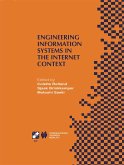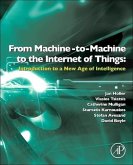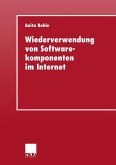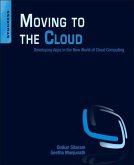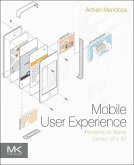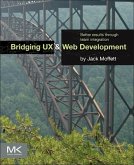State-of-the-art tools are emerging from HCI research labs that give end users unprecedented control over information on the Web. These tools enable all computer users to customize and automate their use of the web without learning any code. For example, Mash Maker from Intel lets users mash Yelp, Craigslist and Google Maps to show all five-star rated restaurants within the vicinity of apartment listings as pins on a neighborhood map. And the possibilities are endless. This flexibility and interactivity was not possible before Web 2.0, open source, and social networking. The area is now exploding and it only continues to grow as users grow less-patient with the limits of the Web, grow more computer savvy, and become more comfortable connecting with people around the world and sharing data with them. Research findings and beta systems have emerged from the labs such has Adobe, Intel, and MIT, and are ready for primetime. HCI developers, researchers, practitioners, and students are eager for reliable information. No Code Required takes cutting edge material from industry leaders and presents it in an accessible manner, including information on the systems, features and benefits, implementation, and lessons learned.
No Code Required presents the various design, system architectures, research methodologies, and evaluation strategies that are used by end users programming on the Web. It also presents the tools that will allow users to participate in the creation of their own Web.
Comprised of seven parts, the book provides basic information about the field of end-user programming. Part 1 points out that the Firefox browser is one of the differentiating factors considered for end-user programming on the Web. Part 2 discusses the automation and customization of the Web. Part 3 covers the different approaches to proposing a specialized platform for creating a new Web browser. Part 4 discusses three systems that focus on the customized tools that will be used by the end users in exploring large amounts of data on the Web. Part 5 explains the role of natural language in the end-user programming systems. Part 6 provides an overview of the assumptions on the accessibility of the Web site owners of the Web content. Lastly, Part 7 offers the idea of the Web-active end user, an individual who is seeking new technologies.
No Code Required presents the various design, system architectures, research methodologies, and evaluation strategies that are used by end users programming on the Web. It also presents the tools that will allow users to participate in the creation of their own Web.
Comprised of seven parts, the book provides basic information about the field of end-user programming. Part 1 points out that the Firefox browser is one of the differentiating factors considered for end-user programming on the Web. Part 2 discusses the automation and customization of the Web. Part 3 covers the different approaches to proposing a specialized platform for creating a new Web browser. Part 4 discusses three systems that focus on the customized tools that will be used by the end users in exploring large amounts of data on the Web. Part 5 explains the role of natural language in the end-user programming systems. Part 6 provides an overview of the assumptions on the accessibility of the Web site owners of the Web content. Lastly, Part 7 offers the idea of the Web-active end user, an individual who is seeking new technologies.
"The web is becoming not only a venue for people to receive information but increasingly a place for them to create new forms of information and to share them. The transition in the role from being a passive consumer to an active consumer as well as contributor is made possible by exactly the kind of work described in this book." -- Dr. Margaret Burnett, Dept of Computer Science, Oregon State University


